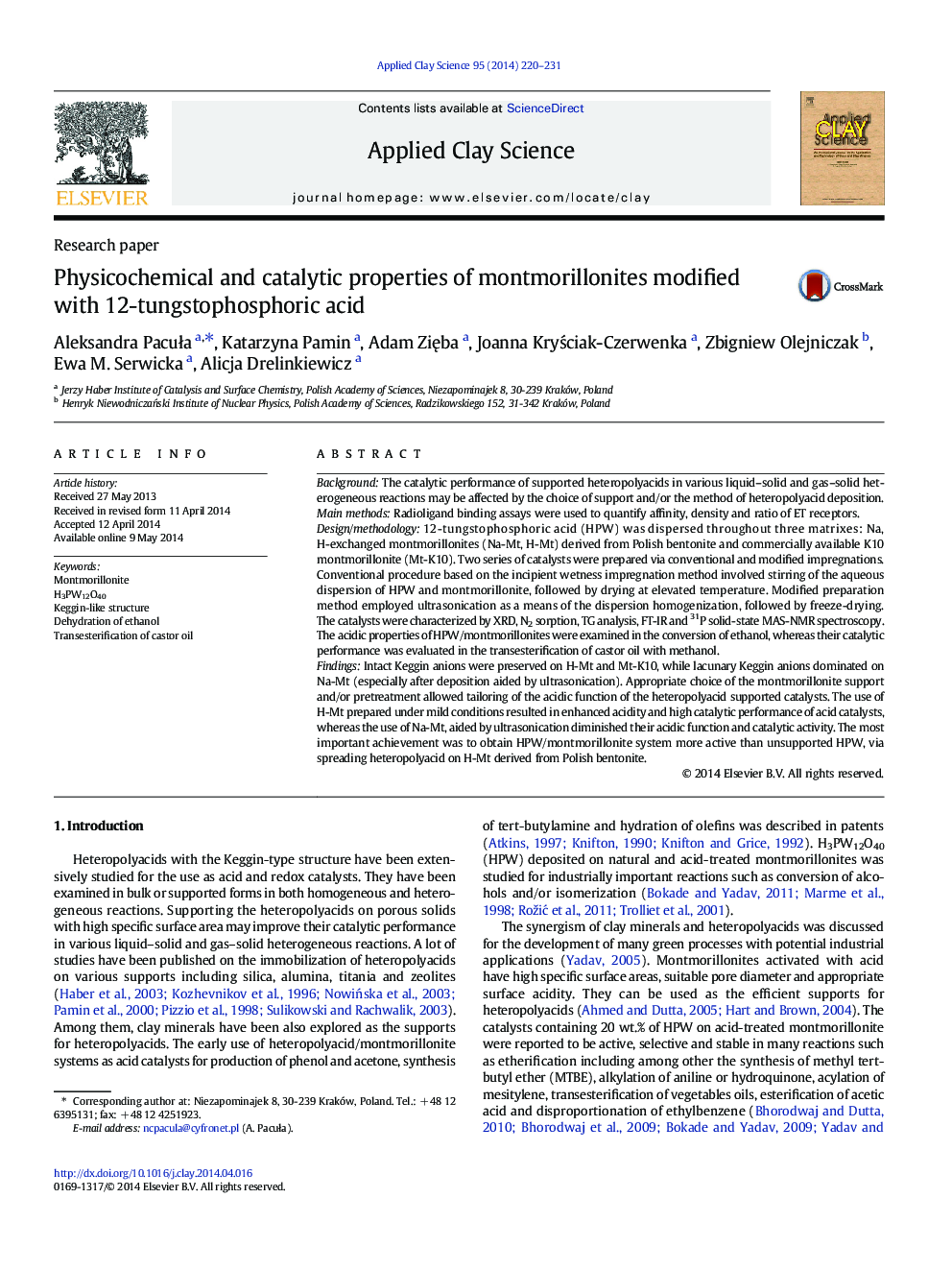| کد مقاله | کد نشریه | سال انتشار | مقاله انگلیسی | نسخه تمام متن |
|---|---|---|---|---|
| 1694813 | 1519082 | 2014 | 12 صفحه PDF | دانلود رایگان |
• H3PW12O40 (HPW) is deposited on various montmorillonites (Na-Mt, H-Mt, Mt-K10).
• Two impregnation methods are applied to disperse H3PW12O40 on montmorillonites.
• Stability of supported H3PW12O40 is monitored by NMR, FT-IR and TG.
• Acidic properties of H3PW12O40/montmorillonites are revealed in ethanol conversion.
• HPW/H-Mt is more active than HPW/Mt-K10 in transesterification of castor oil.
BackgroundThe catalytic performance of supported heteropolyacids in various liquid–solid and gas–solid heterogeneous reactions may be affected by the choice of support and/or the method of heteropolyacid deposition.Main methodsRadioligand binding assays were used to quantify affinity, density and ratio of ET receptors.Design/methodology12-tungstophosphoric acid (HPW) was dispersed throughout three matrixes: Na, H-exchanged montmorillonites (Na-Mt, H-Mt) derived from Polish bentonite and commercially available K10 montmorillonite (Mt-K10). Two series of catalysts were prepared via conventional and modified impregnations. Conventional procedure based on the incipient wetness impregnation method involved stirring of the aqueous dispersion of HPW and montmorillonite, followed by drying at elevated temperature. Modified preparation method employed ultrasonication as a means of the dispersion homogenization, followed by freeze-drying. The catalysts were characterized by XRD, N2 sorption, TG analysis, FT-IR and 31P solid-state MAS-NMR spectroscopy. The acidic properties of HPW/montmorillonites were examined in the conversion of ethanol, whereas their catalytic performance was evaluated in the transesterification of castor oil with methanol.FindingsIntact Keggin anions were preserved on H-Mt and Mt-K10, while lacunary Keggin anions dominated on Na-Mt (especially after deposition aided by ultrasonication). Appropriate choice of the montmorillonite support and/or pretreatment allowed tailoring of the acidic function of the heteropolyacid supported catalysts. The use of H-Mt prepared under mild conditions resulted in enhanced acidity and high catalytic performance of acid catalysts, whereas the use of Na-Mt, aided by ultrasonication diminished their acidic function and catalytic activity. The most important achievement was to obtain HPW/montmorillonite system more active than unsupported HPW, via spreading heteropolyacid on H-Mt derived from Polish bentonite.
Journal: Applied Clay Science - Volume 95, June 2014, Pages 220–231
